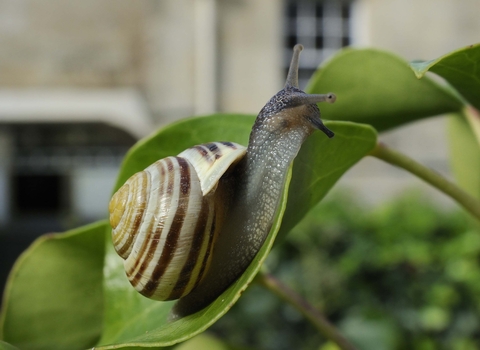
White-lipped Snail ©Nick Upton/2020VISION
White-lipped snail
The White-lipped snail comes in different colour forms, but always has a white band around the opening of its shell. It prefers damp spots in wide range of habitats, from gardens to grasslands, woods to hedges.
Scientific name
Cepaea hortensisWhen to see
January to DecemberSpecies information
Category
Statistics
Diameter: 1.6-2.2cmCommon.
